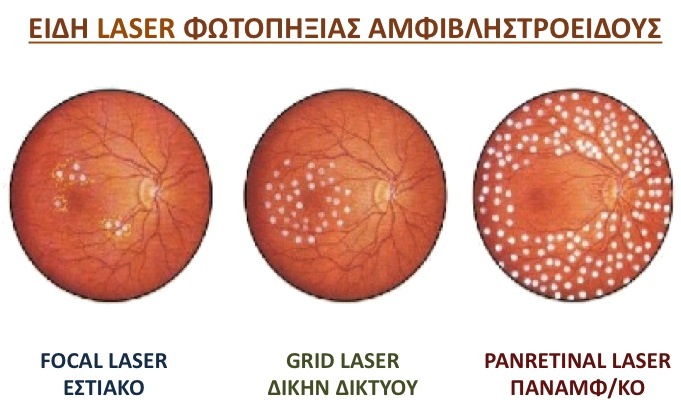Laser photocoagulation
During this procedure, the ophthalmologist uses a special laser light which is applied on the retina for the treatment of macular edema, diabetic retinopathy or hemorrhages.
For this treatment, the use of mydriatic eye drops is required.
The laser procedure usually takes 15-30 minutes and is painless.
There are three types of Laser treatment:
- focal photocoagulation: It is used on patients with diabetic retinopathy. After the fluorescein angiogram and once the blood vessel leakages have been located, they are sealed by the laser to reduce the leakage of liquid and the macular edema.
- application of grid laser: This is used on patients with macular edema, which is usually caused by diabetes mellitus or vessel blockages. For the areas with edemas that need to be treated with a laser to be identified, it is necessary to perform an Optical Coherence Tomography or a Fluorescein Angiography.
These tests show the vessels where there is a leakage of liquid on the macula.
- Panretinal photocoagulation: This is used on patients suffering from productive diabetic retinopathy to reduce the area of the ischemic retinal tissue, thereby reducing the impetus for neovascularization, which could cause hemorrhaging and edemas.

Photocoagulation Types
